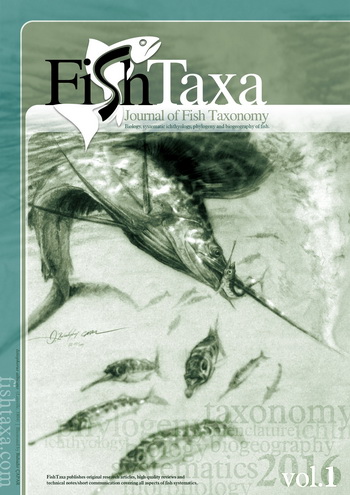Specific features of distribution in the World Ocean of some flying fishes of the genera Exocoetus, Hirundichthys and Cypselurus (Exocoetidae)
Ilia B. SHAKHOVSKOY Shirshov Institute of Oceanology, Russian Academy of Sciences (IORAS), 36, Nahimovskiy Prospect, Moscow 117997, Russia
Abstract
The paper describes distribution (both seasonal and the average long-term) of the species and subspecies of the three previously taxonomically studied by the author groups of flying fishes: genus Exocoetus, subgenus Hirundichthys s.str. and Cypselurus “poecilopterus” species group. Species distribution is compared with oceanographic features (temperature, salinity, water masses, currents, biological productivity). The cases of joint occurrence of species in one sample are analyzed. It is shown that allopatric (and parapatric) species from different groups have different patterns of area partition. In the case of flying fishes of the genus Exocoetus, the main factor determining the boundaries between species is circulation of surface waters, among the representatives of the subgenus Hirundichthys – it is the distance from coasts, and in the "poecilopterus" group – it is the salinity. The boundaries between the ranges of species of the genus Exocoetus pass mainly along the boundaries of ocean currents, in the species of the subgenus Hirundichthys - along the boundary between the far-neritic and oceanic zones, and in the "poecilopterus" group - according to isohaline of ~ 35 ‰. Sympatric species are supposed to have different mechanisms to reduce the interspecies competition: in the genus Exocoetus, there is a division into few-raker and manyraker species, while for the species of the subgenus Hirundichthys it was noticed an alternate use of the Arabian Sea basin and spatial separation of fishes having similar sizes.

